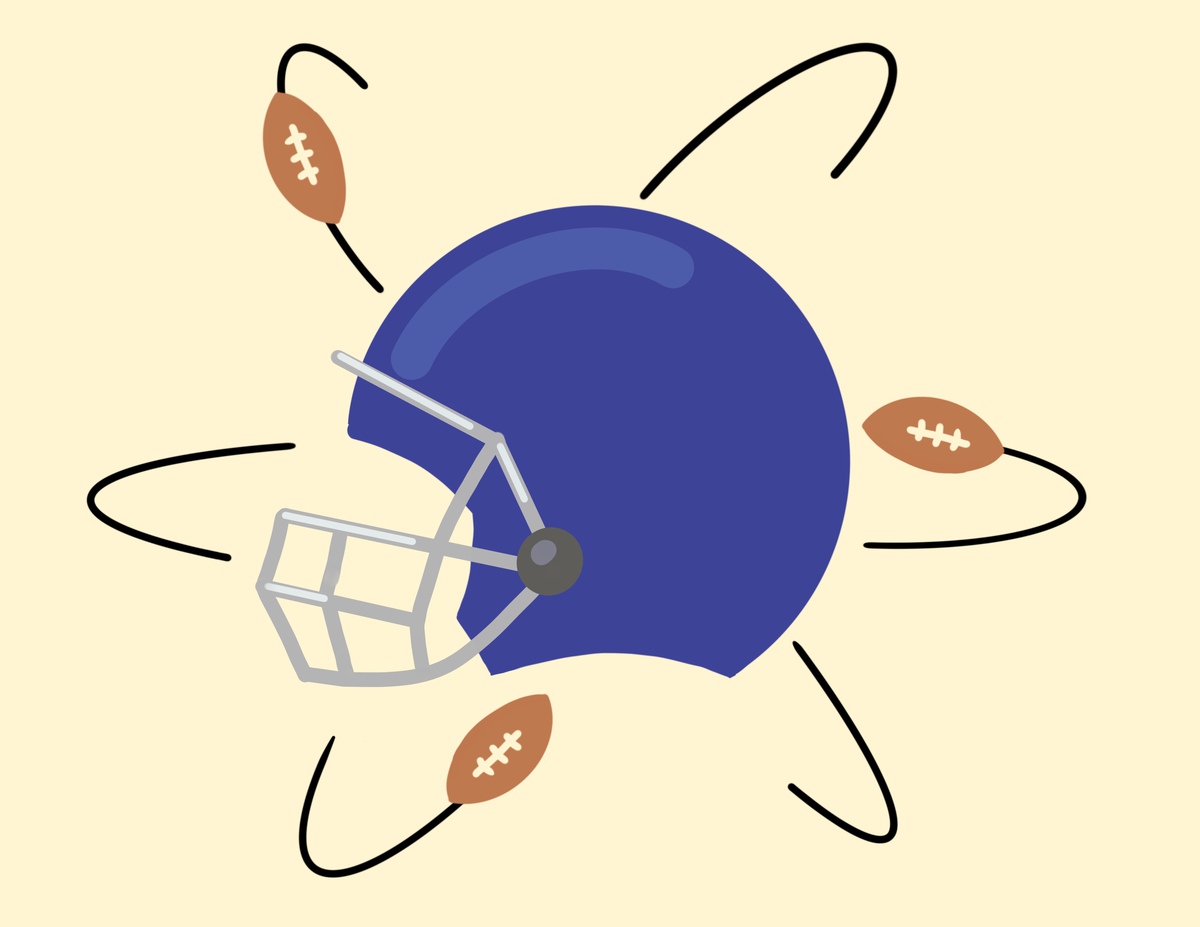Meet the football players tackling STEM
As the Bulldogs gear up for The Game, the News spoke to football players majoring in STEM about their experience in STEM fields and on the football field.

Ariane de Gennaro, Illustrations Editor
With their stunning victory over Princeton last Saturday, the Bulldogs are riding on momentum that has brought them one step closer to the Ivy League championship title. The much-awaited showdown against Harvard this coming Saturday will determine the team’s chances of clinching at least a share of the coveted title.
As the pressure of the season’s final stretch piles on, football players must cope with challenges on the pitch and in the classroom. Just before this Saturday’s final kickoff, the News spoke with members of the Yale football team majoring in STEM about their careers in STEM, managing training and school work and how football training has influenced their academic approach.
“I tried taking the CS100 intro class and I fell in love with it, and I’ve just been doing it ever since,” Jason Lee ’24 said.
Lee, a running back majoring in computer science, came into Yale with no prior experience with coding or computer science. Upon hearing about the emergence of computer science as a top industry, Lee decided that he “might as well just check it out.”
Wande Owens ’23, a defensive back majoring in computer science, had his start in computer science in high school. Owens credits his decision to major in STEM to his passion for problem-solving.
Du’Shaunte Holloway ’23, a defensive back majoring in environmental engineering, was called to the practical nature of a STEM education. Holloway describes himself as “the type of kid to be interested in tinkering around with little things” when he was younger. Though he planned to be a chemical engineer throughout high school, Holloway changed his plans when he came to Yale.
“I started looking through the majors and saw environmental engineering, which deals with sustainability, climate and all the stuff that I was really interested in,” Holloway told the News. “It all came together.”
Holloway researches water desalination in the environmental engineering lab of the Sterling Professor of Chemical and Environmental Engineering Menachem Elimelech.
Yale students already regularly face restrictive schedules and burnout. Football players have an even more restrictive schedule due to practice, workouts, team meetings and other commitments that they have to meet.
“This season, we lift in Payne Whitney [Gymnasium] twice a week,” Owens said. “Because of class, I lift at 6:00 a.m. on Tuesdays and Thursdays. We have meetings right after that in [Linsly-Chittenden Hall] from 7:30 a.m. to 9:00 a.m. and after that, I’ve got class. Practice usually starts at 3:15 p.m. and goes on to 5:45 p.m.”
Despite having busy schedules, football players have managed to strike a cautious balance between athletics and academics by seeking support from different sources. Lee has sought the help of “friends and teammates who are also computer science majors,” whom he describes as his “main support group.”
Owens shares Lee’s approach, but has also sought help from older football players who have shown him “how they‘ve managed their time” and “which sessions or TAs can help out.”
For these players, the lessons they learn from the field can be applied to the classroom too. Both Owens and Lee see a connection between their experiences in football and computer science.
“Anything can go wrong at any moment on the football field and with your work, in computer science specifically, one bug, one tiny error can take hours to figure out,” Lee said.
However, when faced with bugs in programming, Owens stated that the virtue of pushing through adversity, which football instilled in him, inspires him to “keep going, push through and [not] be afraid to reach out for help.”
“Whether you’re doing football, trying to learn proofs or taking the partial derivative … as long as you try to prepare yourself to the best of your ability, pay attention, [be] locked in, give it your full focus and your full effort, you cannot be upset with your outcome,” Holloway said.
After college, Lee is ready to participate in the workforce, hoping to be a “software engineer at a big tech firm.” Owens intends to pursue a career in professional football, but hopes to “leverage the Yale network and the football network” for career opportunities if that does not work out.
Though he expresses a similar desire to join professional football, Holloway still plans to make the most of his environmental engineering background when his football career concludes. He considers picking up on some of his ongoing work in water desalination, but leans more toward “working on sustainable energy and air pollution control in different countries.”
“I’m trying to travel to help small communities and even larger communities be more sustainable and efficient,” Holloway said.
According to the Yale Office of Career Strategy’s “Yale Student Athlete First Destination Report,” 12 percent of athletes in the class of 2021 were employed in research of some kind, 8 percent worked in health services and 3 percent were employed in engineering in their first job after graduation.
The Yale Bowl is located at 81 Central Ave.







